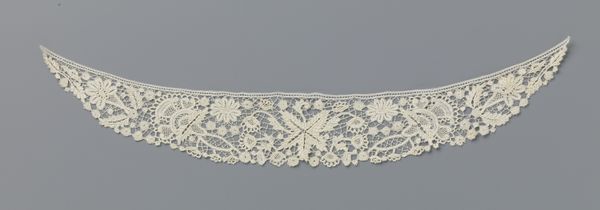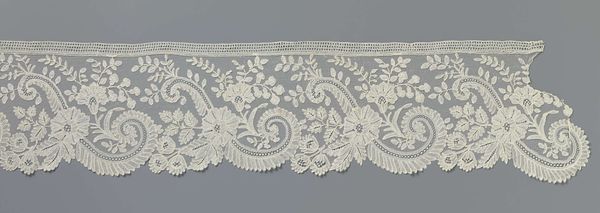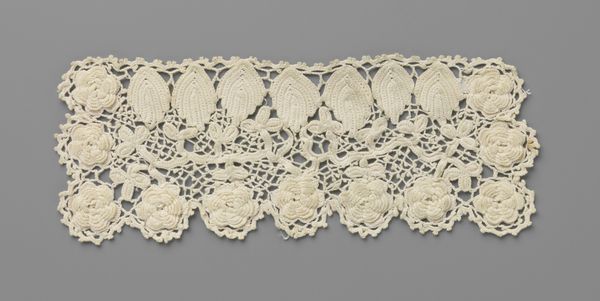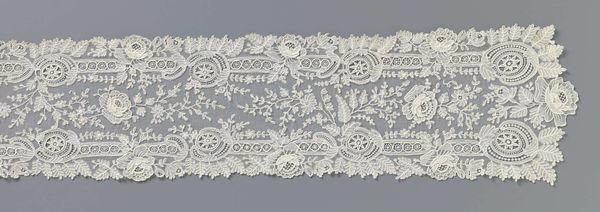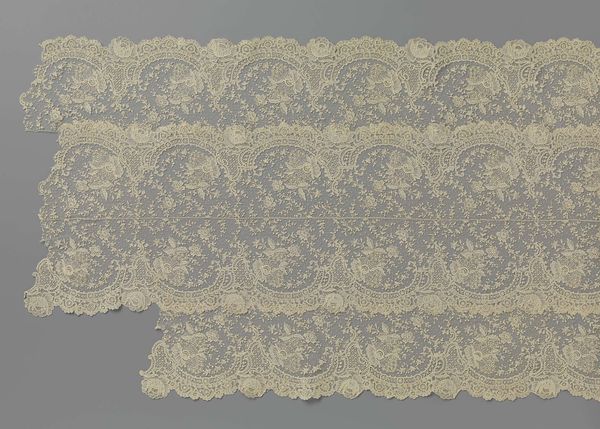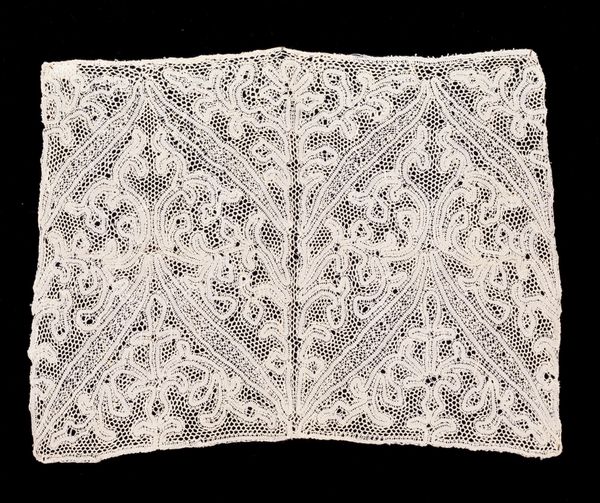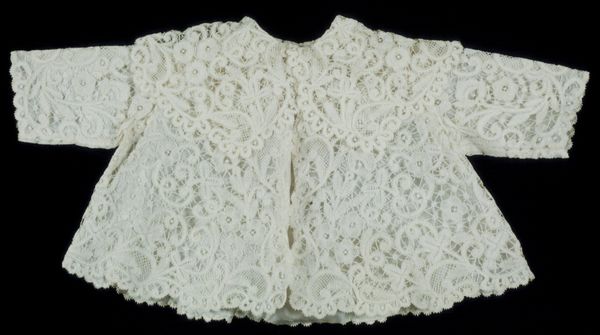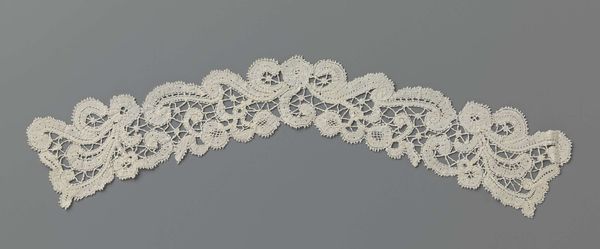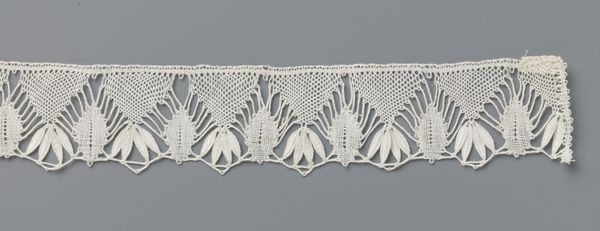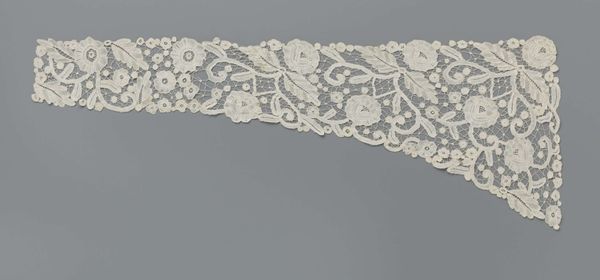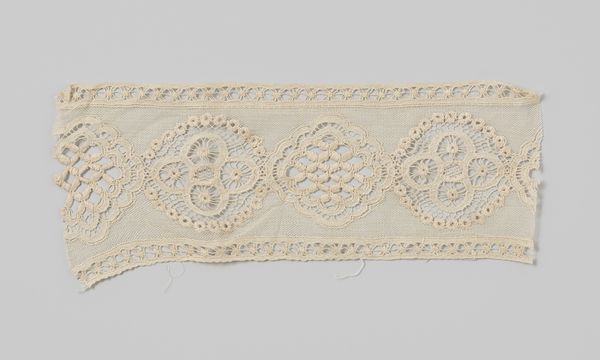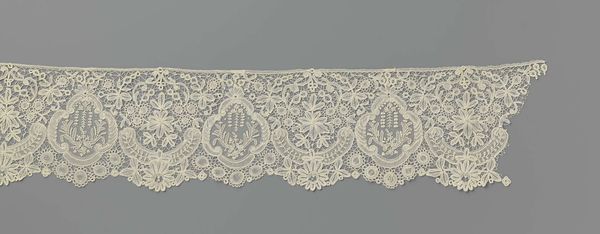
ornament, weaving, textile
#
ornament
#
weaving
#
textile
#
organic pattern
#
france
#
decorative-art
#
rococo
Dimensions: 36 x 12 in. (91.44 x 30.48 cm)
Copyright: Public Domain
Curator: This exquisite "Lappet," dating back to the 18th century, is an example of French decorative art currently housed here at the Minneapolis Institute of Art. Editor: Wow, just looking at it, I’m struck by the delicacy, that pristine, almost ethereal quality it possesses. The floral design feels very light and airy. Curator: Absolutely, and that feeling is meticulously constructed. Made through weaving, each intersection reveals a complex interplay between manual skill, artistic intention, and available materials. The fact that such elaborate designs are created using relatively simple weaving techniques really speaks to the mastery of the artisan. Editor: That's right. It’s impossible to separate this work from its social context—imagine the intensive labor required to produce this level of detail, likely undertaken by women within specific social hierarchies, working to produce symbols of wealth and status for the elite during the Rococo era in France. These objects silently narrate complex power dynamics. Curator: Precisely, consider also the consumption aspect—who wore it and how they displayed it? Lace lappets like these adorned caps or hair, framing the face and instantly signaling social status and wealth. Editor: That level of adornment, the almost obsessive detail, would definitely have had social and political implications during that era. Adorning oneself in such elaborate materials was definitely a means of visual communication, signaling class, access to resources, and perhaps even a certain worldview. I wonder how much these lacemakers were truly compensated. Curator: Those records can be scarce, yet examining surviving pieces alongside legal and trade documents gives us insight into the value placed on their skill and their economic roles. Editor: Seeing something so delicate and ornamental provokes a lot of questions regarding who benefited from it, and under what conditions it was produced. Curator: Right, this little snippet speaks volumes about textile production of the 18th century, its economic mechanisms and distribution, and how it represents a crucial part of material history. Editor: Examining the "Lappet," it challenges us to consider those intersectional layers of class, labor, gender and power that have so shaped our present, embedded even within these beautifully crafted fragments of the past.
Comments
No comments
Be the first to comment and join the conversation on the ultimate creative platform.
